23/ UK/ first year palaeo student/ just here for the dinos and the memes 🤷🏼♀️
Don't wanna be here? Send us removal request.
Note
What are your thoughts on Leptictidium?
the verdict is:

youre shitting me theres no way this thing was real

what the fuck

WHY WAS IT SO SMALL
390 notes
·
View notes
Text

Blathers was giving me a lecture. Quite interesting!
19 notes
·
View notes
Text
Helicoprion: What if, like, teeth,
Mesosaurus: Yeah?
Helicoprion: but WHEEL
Mesosaurus: No don’t -
Helicoprion:

(Image by ДиБгд)
40K notes
·
View notes
Note
guad, why is one of your three primal fears whales?
so you know how millions of years ago life on this planet tended to be *enormous*? like, after dinos we got ridiculously massive mammals like the indricotherium:
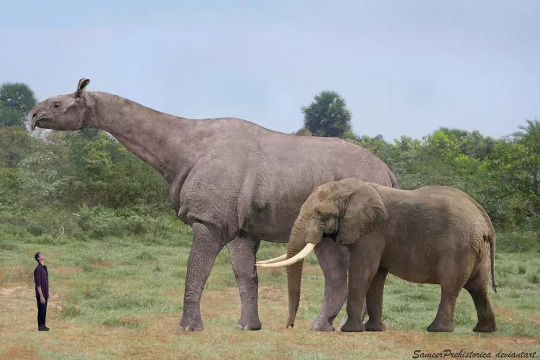
and we got freakin giant apes

and giant fucking camels (Titanotylopus)

well naturally ancient ocean life was 1000x scarier. absolute nightmare fuel. it wasn’t enough that we got terrifying GIANT FUCKING MEGALODON SHARKS
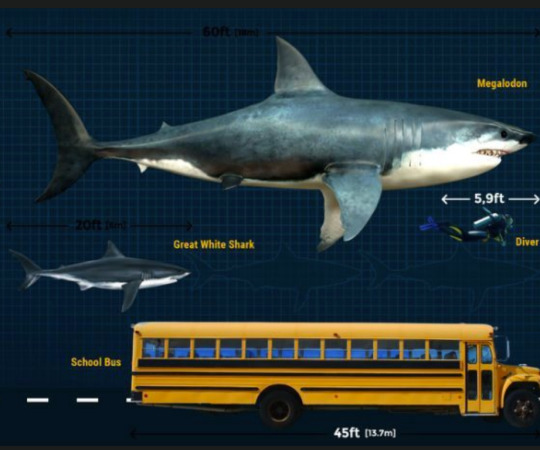
no there was also bullshit like styxosaurus just running around. for NO REASON
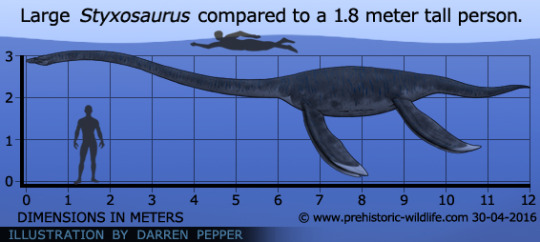
look at this bullshit

even the fucking whales were terrifying. wtf Basilosauruses NO ONE asked for
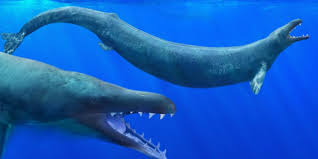
oh wait don’t let me forget that even boring fucking FISH couldn’t be normal
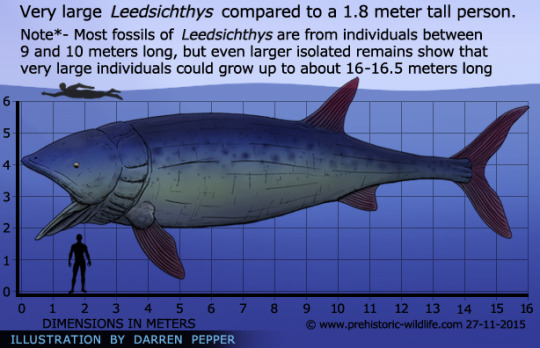
unnecessary and unhelpful.
I hope i have made a point. the largest animals in the history of the world are now extinct and fuck you PETA i am GRATEFUL for that. i just, i have enough shit to deal with in the world as it is. i don’t think it’s fair to make me deal with that too, i really don’t. so good riddance.
Except. Blue. Whales.
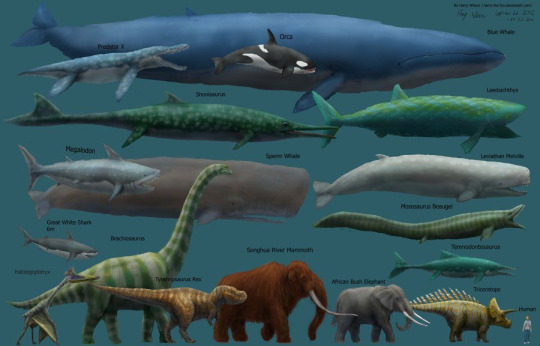
did i say the largest animals in history? NOPE ACTUALLY THAT WOULD BE THIS FUCKER

This Utter.

Blue.

Bastard.

Life on this planet is 4 billion years old and the relatively recent accursed Blue Whale is the largest animal to have existed in all that time. I hate and resent that, and this is why blue whales are tied with late-stage capitalism as one of my Top 3 All Time Fears. Good day to you.
EVERYTHING ELSE GOT SMALLER! EVERYTHING ELSE! NO MORE GIANT RODENTS, NO MORE BEAVERS THAT COULD SQUASH A PERSON WITH THEIR FOOT. NO MORE 3 TON SLOTHS. EVEN THE FUCKING SHARKS got smaller. But not the blue whales. NOT THE FUCKING BLUE WHALES
15K notes
·
View notes
Note
My vertabrate anatomy teacher decided to set us a task to study skulls more and to prove how ridiculous fish are, so our “homework” was to boil the flesh off a fish head and get the bones to try to reconstruct them.
Me and a mate figured “hey that should be easy! Why don’t we try doing a whole fish and articulate it!”
Biggest mistake of my life
We must have spent 4 hours pulling hundreds of fucking tiny bones out of the pots (stinking up my kitchen!) and I swear I nearly cried even trying to do just the skull
Turns out the lecturer forgot he even set the “homework” so I just sat through a 3 hour lecture/lab with like 100 smelly ass fishbones in my backpack and a newfound hatred for anything fish related
Two words: Stingray skeletons.
oh my stars and garters
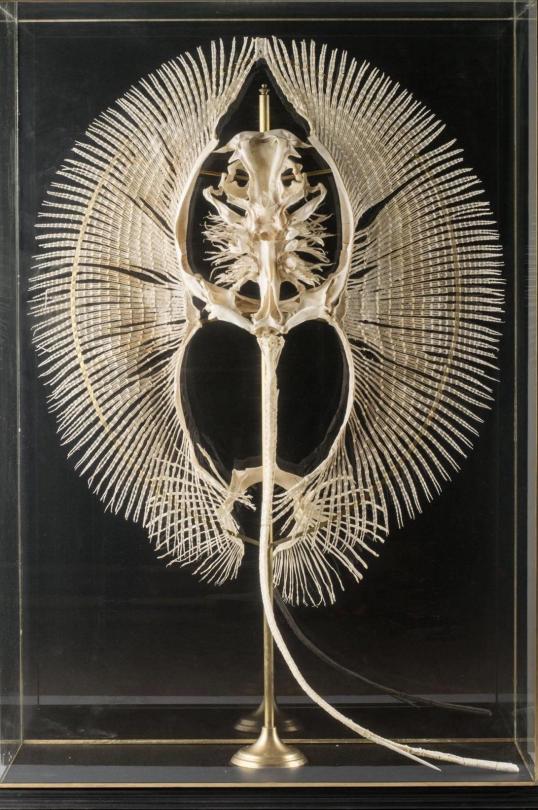
how have we been sleeping on ocean skeletons???
48K notes
·
View notes
Text

Simple parasauralophus drawing before bed
3 notes
·
View notes
Text

Inspired by my vertebrate anatomy lecture yesterday, decided to do some drawing!
1 note
·
View note
Text
Foreyia maxkuhni
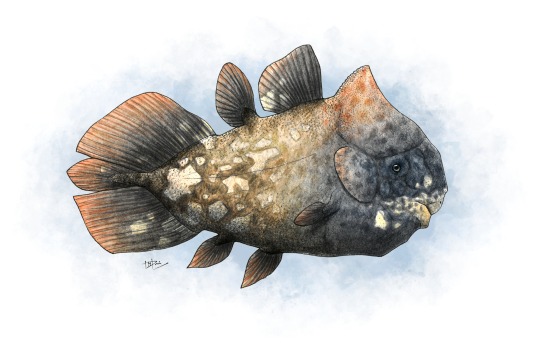
Etymology: Forey’s Fish
First Described By: Cavin et al., 2017
Classification: Biota, Archaea, Proteoarchaeota, Asgardarchaeota, Eukaryota, Neokaryota, Scotokaryota, Opimoda, Podiata, Amorphea, Obazoa, Opisthokonta, Holozoa, Filozoa, Choanozoa, Animalia, Eumetazoa, Parahoxozoa, Bilateria, Nephrozoa, Deuterostomia, Chordata, Olfactores, Vertebrata, Craniata, Gnathostomata, Eugnathostomata, Osteichthyes, Sarcopterygii, Actinistia, Coelacanthiformes, Latimerioidei, Latimeriidae,
Time and Place: Foreyia lived about 240.91 million years ago, in the Ladinian of the Middle Triassic
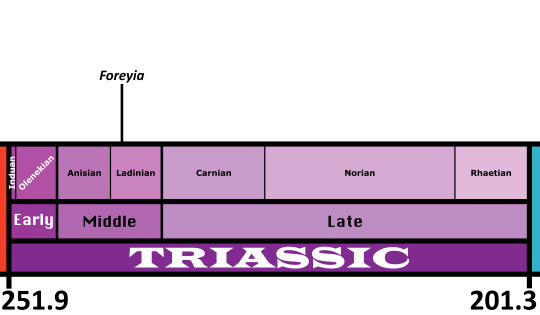
Foreyia is known from the Prosanto Formation of Switzerland
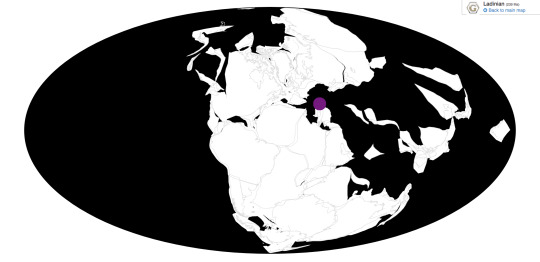
Physical Description: Foreyia was a Coelacanth, a sort of Lobe-Finned Fish once thought to be a unique feature of prehistoric ecologies, and now known to survive in two different species today. This is wild, of course, but Coelacanths were weird in many different ways throughout their prehistoric tenure. Foreyia looked only a little similar to its cousins - it had a huge head compared to other Coelacanths, as well as a beak - something that you really only see in ray-finned fish and tetrapods - an underbite, and a horn on its head. That said, its body looks similar enough to other coelacanths, with dorsal fins and a wide tail fin, and large forelimb fins. However, the large size of its head makes it look like a Coelacanth that had been squished extensively, with the body looking quite short and squished compared to its close relative Ticinepomis. We aren’t sure as to what colors it may have been, but since it lived in a tropical region and may have had a similar niche as a Parrotfish, it is reasonable to suppose it may have been colorful. It was also very small, only around 20 centimeters long.
Diet: Given the beak, it’s likely that Foreyia ate hard food, potentially even similarly to living parrotfish - by chipping off algae covered rocks and reef builders, or potentially eating small shelled animals in the tidal pools.
Behavior: Foreyia’s head was huge, and so that likely impacted its swimming style, though it is unclear how. Modern Coelacanths moving very slowly through the water, moving their fins to help propel through. Since Foreyia reduced the size of its fins to an extent, it’s possible that the tail (which was very large compared to the rest of the body) was more vital in swimming, and the head may have been used to help steer (though this is just a hypothesis). The bony shield may have also been helpful in protecting Foreyia from danger, which makes sense ans many predators were present in its environment. This is at least somewhat supported by its strong clavicle muscles. It probably would have spent a significant amount of time grazing, either on small crunchy invertebrates or algae. Today, Coelacanths don’t seem to shoal much; however, that may not have been the case in the past, so we can’t infer a loner lifestyle for Foreyia.
Ecosystem: Foreyia lived in a coastal shelf environment, specifically in a tidal basin that would often become anoxic as the tide went out during the day, meaning that Foreyia had to move around a lot to avoid suffocation. This environment was probably at least somewhat reef or tidal pool like, with a variety of fish swimming around in the ecosystem. There were many ray-finned fish here, including Peltopleurus, Habrichthys, Archaeosemionotus, Saurichthys, Ctenognathichthys, Besania, Prosanticthys, Eoeugnathus, and Ducanicthys. There was also another Coelacanth, Ticinepornis. As for tetrapods, there was the Pachypleurosaur Neusticosaurus, the Helveticosaurid Eusaurosphargis, and the Tanystropheid Macrocnemus. These reptiles would have been major predators of Foreyia.
Other: Foreyia is so weird in its shape that the original authors proposed it was Heterochronic - ie, different aspects of baby Coelacanth anatomy were retained in order to provide useful adaptations for Foreyia. However, some later researchers have cast doubts on this idea, given that baby Coelacanths don’t… actually seem to resemble Foreyia. Clearly, the jury is still out!
~ By Meig Dickson
Sources Under the Cut
Keep reading
297 notes
·
View notes
Text
when i was a baby i thought big words and oxford commas and kcup coffee machines make u smart. you know what makes you smart? loving ur friends.
146K notes
·
View notes
Text

Not a cellphone in sight, just cambrian arthropods living in the moment😩😩
333 notes
·
View notes
Photo

Acanthite Imiter Mine, Ouarzazate Province, Souss-Massa-Draa Region, Morocco, Africa
144 notes
·
View notes
Text
Postosuchus
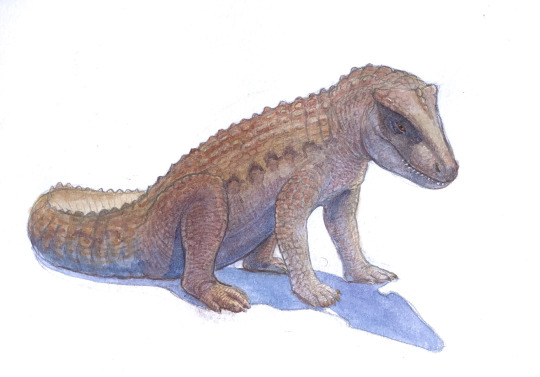
By Ripley Cook
Etymology: Crocodile from Post, Texas
First Described By: Chatterjee, 1985
Classification: Biota, Archaea, Proteoarchaeota, Asgardarchaeota, Eukaryota, Neokaryota, Scotokaryota, Opimoda, Podiata, Amorphea, Obazoa, Opisthokonta, Holozoa, Filozoa, Choanozoa, Animalia, Eumetazoa, Parahoxozoa, Bilateria, Nephrozoa, Deuterostomia, Chordata, Olfactores, Vertebrata, Craniata, Gnathostomata, Eugnathostomata, Osteichthyes, Sarcopterygii, Rhipidistia, Tetrapodomorpha, Eotetrapodiformes, Elpistostegalia, Stegocephalia, Tetrapoda, Reptiliomorpha, Amniota, Sauropsida, Eureptilia, Romeriida, Diapsida, Neodiapsida, Sauria, Archosauromorpha, Crocopoda, Archosauriformes, Eucrocopoda, Crurotarsi, Archosauria, Pseudosuchia, Suchia, Paracrocodylomorpha, Loricata, Rauisuchidae
Referred Species: P. kirkpatricki, P. alisonae
Status: Extinct
Time and Place: 227 to 201 million years ago, from the Norian to the Rhaetian of the Late Triassic.
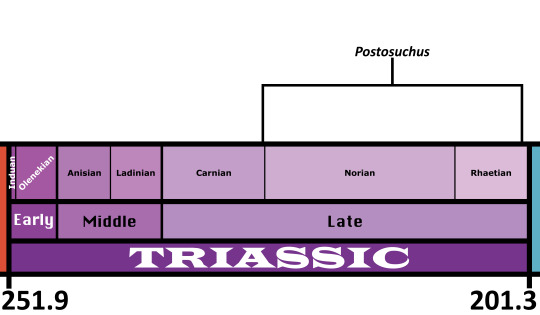
Postosuchus is known from Arizona, New Mexico, Texas, and North Carolina.
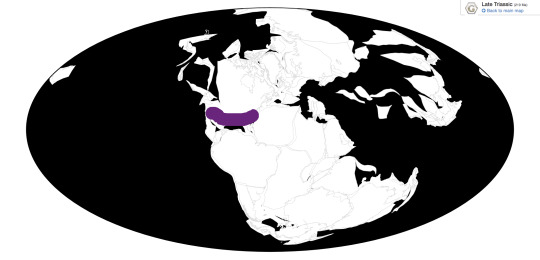
Physical Description: Postosuchus was one the larger pseudosuchians of the Triassic, growing up to 6 meters (20 feet) in length. Its head was robust and rectangular in side view, with large spikelike teeth. The top of the skull has a flattened dorsal surface and roughened “brow ridges” that may have been covered with keratin in life. The body and tail were long and covered with osteoderms, which have prserved in the fossil record. Its forelimbs were much shorter than its hindlimbs and its hands were relatively small. Some of the fingers were slightly reduced in size, foreshadowing would happen to tyrannosaurs much later. The legs were longer, but shorter than those of theropod dinosaurs, giving Postosuchus a lower-slung stance. The hands and feet had five digits each.
Diet: Postosuchus was an apex predator. Its diet probably included dicynodonts, early dinosaurs, herbivorous pseudosuchians, and other archosauromorphs such as allokotosaurs.
Behavior: Based on how small the arms were relative to the hindlimbs, it is likely Postosuchus was bipedal, and probably even been an obligate biped based on the anatomy of its hips and limbs. It is not very well-built for pursuit, so Postosuchus was likely an ambush predator. It likely had well-developed senses of sight and smell. Like modern crocodilians, it may have been a largely solitary creature, with few Postosuchus in the area at a time. It is unknown whether or not it marked its territory with pee as in Walking with Dinosaurs.
Ecosystem: When Postosuchus lived, North America was arid, being inland on Pangaea. Most Postosuchus fossils come from the Chinle Formation of New Mexico and Arizona. Chinle was crawling with pseudosuchians: these include aetosaurs such as Typothorax and Desmatosuchus, the small herbivorous Revueltosaurus, the strangely coelurosaur-like Shuvosaurus, and the leggy “sphenosuchian” Hesperosuchus. Postosuchus also lived alongside early theropods like Coelophysis and Chindesaurus, the dinosauromorph Dromomeron, phytosaurs such as Smilosuchus, Leptosuchus and Machaeroprosopus, the bizarre archosauromorphs Trilophosaurus and Vancleavea, the long-necked tanystropheid Tanytrachelos, a drepanosaur, dicynodonts such as Placerias, cynodonts, lungfish, early sharks, and temnospondyls such as Koskinonodon and Apachesaurus. Postosuchus is also known from the coeval Dockum Group of Texas, which had many of the same fauna.
Meanwhile, in North Carolina, Postosuchus lived alongside other pseudosuchians such as Dromicosuchus and Stegomus, dicynodonts, the cynodont Plinthogomphodon, and temnospondyls. It would have been further inland, and thus even more arid.
Other: Sankar Chatterjee originally described Postosuchus in 1985 as the ancestor of tyrannosaurs. Unfortunately, Chatterjee is kind of an idiot. It was very soon after recognized to be an extinct relative of crocodilians. Chatterjee also referred several juvenile skeletons, which are now recognized as the adults of Shuvosaurus.
~ By Henry Thomas
Sources under the cut
Keep reading
212 notes
·
View notes
Text

A stunning (and massive) opalized ammonite shell at the Perot Museum of Nature and Science in Dallas, TX. Opalized fossils may form if the remains of an organism are preserved in silica as opposed to limestone.
368 notes
·
View notes
Text
WHY THE TRIASSIC????
What the FUCK is so WEIRD about the Triassic?
Well I will TELL YOU!
Okay so first of all, the Triassic is SUPER DUPER OLD. In the grand scheme of the Earth, sure, it happened relatively recently, but working on the scale of the entire geologic time span of the Earth’s existence is not exactly fair:

I mean, animals that we can recognize today didn’t show up until that line in the Phanerozoic (Hadean is the oldest stuff), so like, it’s smack dab in the middle of THAT
Look, basically, here’s what happened:
- The earth Formed. Life Appeared. Chaos reigned (4,600 million years ago until 4,000 million years ago)
- Life began to become more complex. Some life began to stick its blueprints inside of pockets so they’d be safer. They then swallowed other life forms that were better at getting energy, but kept them around like a buddy inside of them. Some of these guys could make a shitton of oxygen. This made the earth cool and a lot of shit die out super duper quickly. Extinction rate unknown. (4,000 million years ago until 2,500 million years ago)
- Climate change and fluctuating oceans allow life to start to group up together into SuperLife aka Multicellular Things. These multicellular things got more and more complicated. Some became animals and started moving around a lot. Some plants went on land. Some things were super weird looking and mysterious. LOTS of experimentation by life. Things start to change and a lot of these early experiments go extinct. Extinction rate unknown. (2,500 million years ago until 541 million years ago)
- Animals can suddenly burrow underground and go absolutely apeshit and diversify faster than you can say “wait a second whAT THE FUCK IS THAT”. Ice Age causes Death, 85% of species die out. (541-444 million years ago)
- Fish suddenly have a chance to be weird too and some of them decide, what the heck, let’s crawl onto land. Why not, right? Some other animals decide to join them. Plants make everything super cold, 75% of all species die out. (444-359 mya)
- Land-vertebrates start to diversify. They try out a lot of new things, but there aren’t a lot of them yet. So there’s still a lot of experimentation in body plans. Mammal-relatives are actually some of the most diverse ones. Reptiles are fairly rare. A GIANT MASS EXTINCTION CAUSED BY A GIANT LAVA FIELD EXPLODING KILLS ~95% OF LIFE ON EARTH. (359-252 mya)
- NEW animals get to try to diversify and do lots of crazy shit in the wake of SO MANY JOBS IN THE ENVIRONMENT GETTING CLEARED OUT. Reptiles diversify so fast you don’t know what the heck is happening. Other animals also take this opportunity to do new and weird shit. VOLCANOS EXPLODE, KILL ~80% OF LIFE (252-201 mya)
- Dinosaurs finally get to do fun things now that other reptiles are no longer being weird. Modern life starts to show up. (201 mya-today).
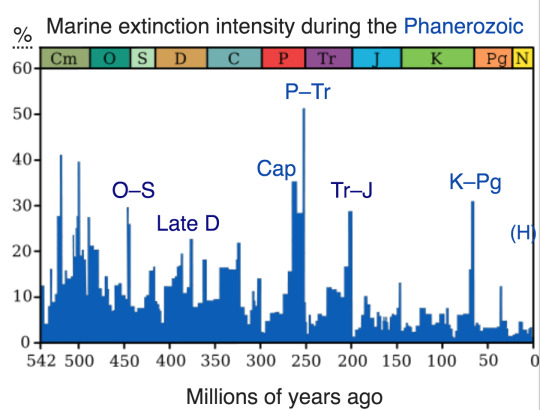
BASICALLY:
- Land Animals had only just started to diversify and try out new funky things with their bodies in order to cope with the challenges of terrestrial life
- Then a giant mass extinction killed everything. Mass exinctions are bad news for a lot of shit that’s specialized for the environment that’s been destroyed, BUT it allows things that make it through to have a chance to try out new shit to fill all those empty jobs in the environment
- So, generalist reptiles, who hadn’t had a chance to do jack diddly squat before, now suddenly had the whole planet to play with. And the other animals around them, from mammal-cousins to amphibians to fish to insects to other invertebrates, also got to try out some new stuff in this new world
- AND THEN ANOTHER MASS EXTINCTION HAPPENED RIGHT AFTER THAT RESET THE CLOCK AGAIN
This means that the TRIASSIC has some of THE MOST UNIQUE ANIMALS TO HAVE EVER EVOLVED IN EARTH’S HISTORY. Experiments were tried, rapidly, and MANY were lost RIGHT AWAY. It’s not like the life that evolved after that, which was honestly similar to what we see today - or those that evolved after the end-Cretaceous extinction, which was even more like today. These were weirdos that appeared and were wiped out before they could continue on to today
And, because this was a rapid evolutionary period, we see the starts of many of today’s modern groups of animals, and they’re super weird, too!
Honestly, the only weirder period in Earth’s history is the Cambrian Explosion, when animals first started doing anything notable at all

On top of THAT, the ENTIRE EARTH was ONE GIANT SUPERCONTINENT called Pangea! Everyone could go everywhere! There were no terrestrial barriers to movement! So many creatures spread all over the globe. It was a HOTSPOT of biodiversity and a major turning point in Earth’s History
But, because the dinosaurs that evolved in the Triassic were kind of Meh, it doesn’t get enough press!!!!!!!!!!!!!
So, we’re going to cover the Weird and Wonderful animals of the Triassic - we have a carefully curated list of Weirdos ready to take Tumblr by storm, and we hope you’ll enjoy learning about these amazing animals right along with us! You’ll have to wait till tomorrow to see them, though - don’t want to give away the surprises!
GET! PUMPED!

IT’S TRIASSIC TIME!
3K notes
·
View notes
